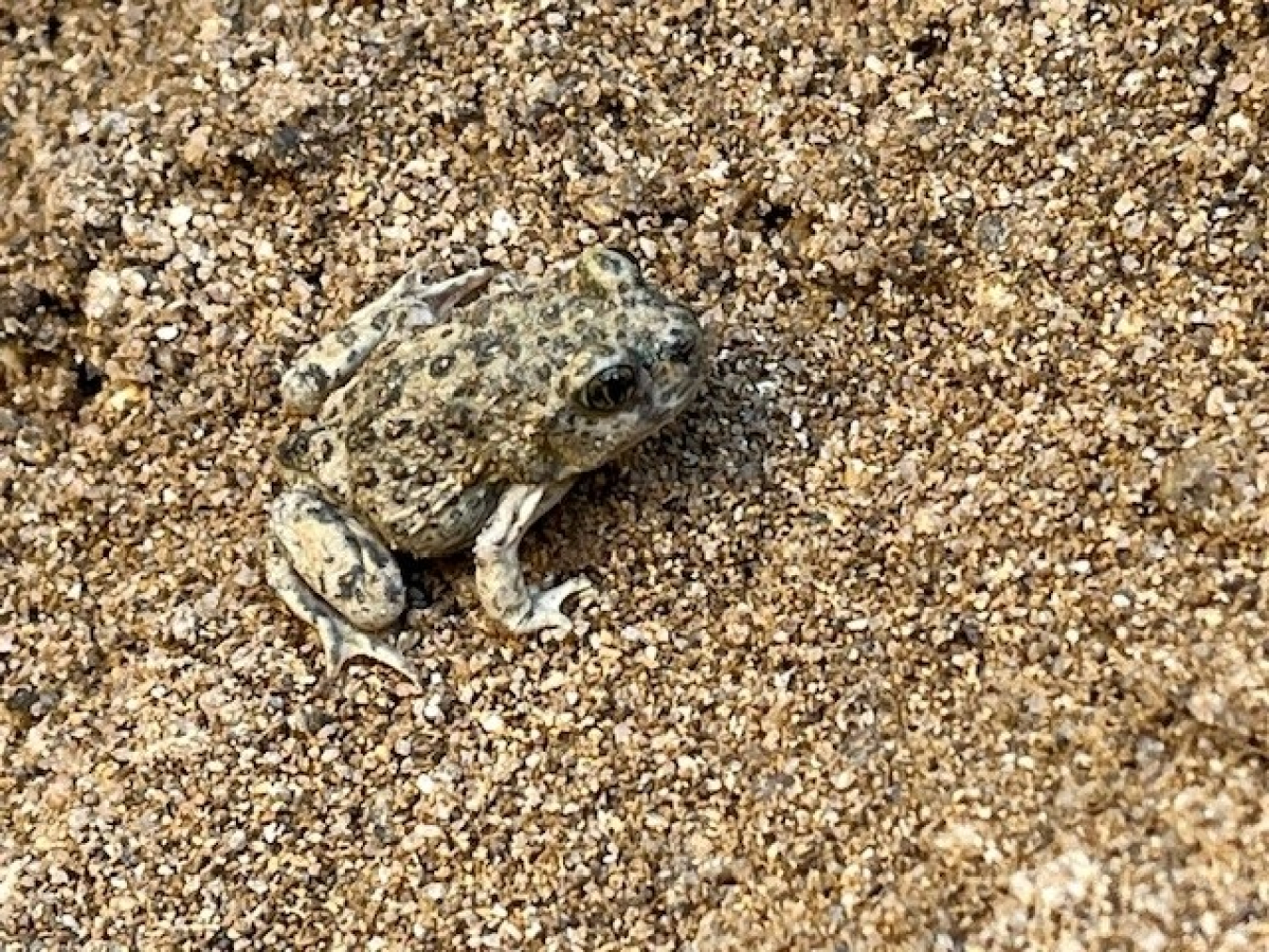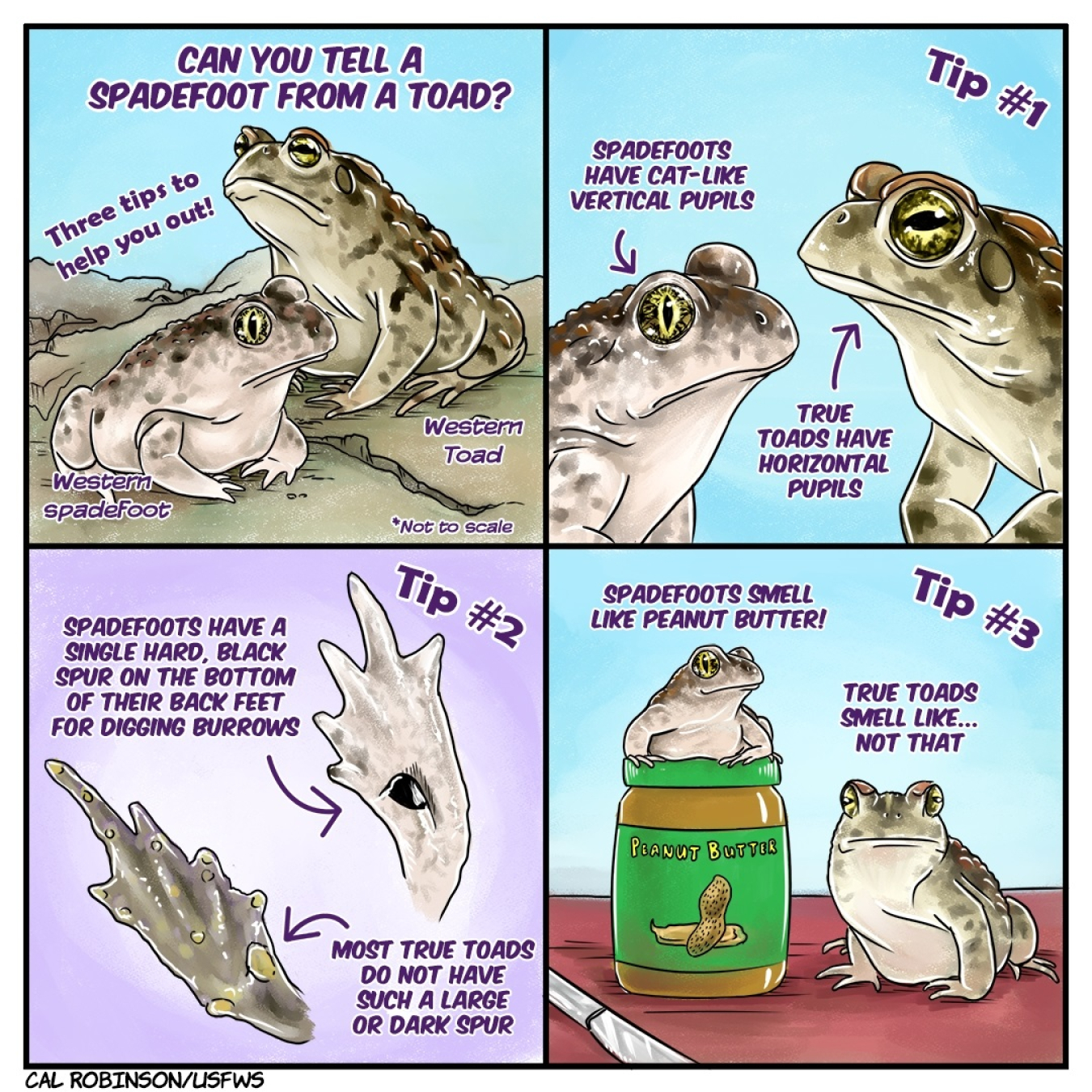About 150 western spadefoot tadpoles were recently found near the Former Sodium Disposal Facility (FSDF) in Area IV at the Santa Susana Field Lab (SSFL).
Energy Technology Engineering Center
August 20, 2024
About 150 western spadefoot tadpoles were recently found near the Former Sodium Disposal Facility (FSDF) in Area IV at the Santa Susana Field Lab (SSFL).
Known as Spea hammondii, the western spadefoot toad is not a true toad but rather a frog that has vertical pupils and teeth in its upper jaw, according to the U.S. Fish and Wildlife Service (USFWS). The amphibians also have sharp black spades on their hind feet that help them dig burrows, where they live for eight to 10 months out of the year. They emerge from their burrows to breed and feed in nearby ponds and creeks.
Dr. Tara Schoenwetter, a biologist who has worked at SSFL since 2011, discovered the tadpoles in April while conducting biological monitoring at the site. She said the last time the toads were seen at SSFL was in 2012.
“These toads are pretty elusive, so we don’t know a lot about them, like where they go when they aren’t in water, how far they burrow and even where [this group] came from,” Schoenwetter said.
“I was so excited to find them because it’s something new we haven’t seen a lot of for some time and it also exemplifies the diversity of species at SSFL, which shows that the site is doing well.”

Not knowing where the toads came from is one of the big questions, she added. It could mean the creatures have site fidelity, meaning that they return to locations they have previously been.
The growth cycle for spadefoot toads is about three to 11 weeks, depending on the weather. If conditions are hot, they will metamorphize from tadpoles into adults much faster, Schoenwetter said.
Since spotting the spadefoot toads at SSFL again this spring, Schoenwetter said she has observed many moving away from the pond where they were discovered, with some going as far as 250 feet to burrow.
In December 2023, USFWS issued a proposal to list the spadefoot toads as threatened on the Endangered Species List due to habitat loss, predation by non-native species and climate change. A rule on the listing is anticipated soon.
Spadefoot toads are currently listed as a species of special concern by the California Fish and Wildlife Service (CDFW). Being designated as a threatened species would be a federal listing.
“If that does happen, we would continue to work with USFWS on the best approaches for protecting the toads during any work done onsite,” she said.
The spadefoot toads were not addressed in the biological assessment the Department of Energy (DOE) conducted for SSFL. If the toads are added to the federal Endangered Species List, then DOE will continue to coordinate with the wildlife services on next steps.
“This is just one of many examples why continued consultation with USFWS and CDFW is so important as we continue our cleanup mission at SSFL,” said Josh Mengers, DOE’s site manager and project director at SSFL.
Learn more about the western spadefoot toad on CDFW or USFWS.
-Contributor: Melissa Simon

